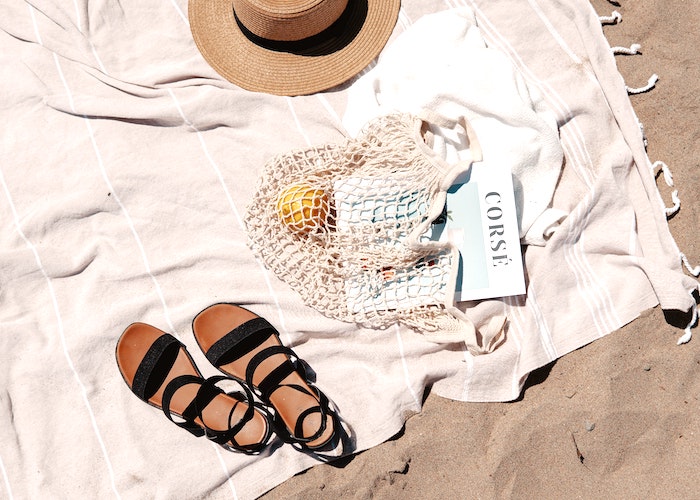5 Tiny Habit Changes That Helped Me Get Better With Money

This article originally published on June 23, 2020.
I always considered myself to be competent with money. That doesn’t mean I’m rolling in dough or that I’m financially independent, but I can make a budget, pay my bills, and save money for short- and long-term goals. That said, I experienced a rude awakening in 2018. After a streak of years with substantial raises, I’d fallen victim to “lifestyle creep” and was living just above my means.
I found myself with no emergency savings to cover $2,000 in emergency car repairs and the realization that I’d been gently hovering around $5,500 in credit card debt for at least three years, despite making regular payments. It wasn’t a catastrophic financial position, but it was uncomfortable and unreasonable given my income. The inability to cover a one-time car concern really drove home that I was not managing my finances well.
Over the course of 2019, I tweaked a number of habits to pay off my debt and started to build my savings. My savings and debt payoff goals didn’t represent an unreasonable amount of money — approximately $10,000 — but they were significant goals and seemed achievable over the span of one year. In order to accomplish both goals, I took a hard look at some of my habits to see what I could make more efficient and more beneficial to my financial health.
1. I read about personal finance for a few minutes each day.
If I try a new resource and I don’t like it enough to check regularly, I move on to a new one.
I absolutely love reading, but I always favor fiction over non-fiction. At the start of 2019, I decided that I was finally a grown-up and that it was time to find some non-fiction topics I could digest. I started with Atomic Habits by James Clear. Clear talks about how habits form and how to develop good habits and break bad habits. It was the perfect book to start the year with. One tip Clear gives is to start with two minutes per day and build up to a longer length of time when building a habit. He also recommends finding something that makes the habit enjoyable or you won’t stick with it.
The Financial Diet had become an entertaining and informative resource for personal finance education up to this point, so I started by reading one TFD article every morning. When TFD recommended Broke Millennial by Erin Lowry, I added that to my list of Financial Resources and worked my way through the book. Lowry clearly discusses ways to prioritize debt and improve financial health. One year later, I still consider her book to be an obvious turning point in paying off my debt and building my savings. From there, I went on to find additional resources including blogs, Instagram accounts, books, and newsletters which make it simple to get information on a daily basis. Some of my resources include @SheTalksFinance, @DumpsterDog, and Invested by Danielle Town. If I try a new resource and I don’t like it enough to check regularly, I move on to a new one.
2. Instead of checking my bank accounts whenever I check my accounts on Monday morning.
It’s become a nice ritual I look forward to at the start of each week
In Atomic Habits, Clear also recommends setting a specific time to perform a habit and using habit-stacking techniques. Setting a specific time makes it easy to track a completed task and encourages regular practice. Habit-stacking occurs when you add a new habit before or after an existing habit. Prior to learning these techniques, I checked my bank accounts generally once a week but at random times. Now, I intentionally look at my bank accounts and credit card balances on Monday morning, after making my coffee and before reading my email newsletters and financial resources. It’s become a nice ritual I look forward to at the start of each week. While working on paying down my credit card debt and building my emergency savings, it felt great to look at my accounts and see the numbers improve. After checking my accounts, I draw a dollar sign on my kitchen calendar as my habit tracker.
3. I track my expenses to compare to my budget. And I track them ASAP
There is something about physically typing in the amount of money that I just spent that helps keep me on track.
Every year I update my budget using an Excel spreadsheet I created in college. In those days, I needed to strictly save money during my internships and my work-study job in order to have spending money throughout the year. After I graduated and started making real money, the habit of updating my budget carried over, but it was more of a guideline than a rule. At the start of 2019, I acknowledged that the lack of adherence to my budget was a big contributor to my treadmill of debt. I was never going to pay off my credit card or build my savings if I was flirting with my expenses. I researched budgeting apps to find which one would be easiest to use and landed on an app called Spending. Spending is extremely simple — you list the various areas you spend your money, input and sort your expenses, and input and sort your income. I love how simple it is to use and that it’s not actually linked to my bank account. Now, every time I spend money, I track the expense. Some people might consider this duplicate effort because you can just look at your bank statements online, but there is something about physically typing in the amount of money that I just spent that helps keep me on track.
4. I don’t just look at my income or debt, I calculate my net worth.
When I sat down to run the numbers, I realized that even with my credit card debt, I had a positive net worth.
To be honest, I didn’t even know what Net Worth was at the start of 2019 but over the course of the year, I discovered that it’s simple to calculate. Net Worth is the sum of your assets minus the sum of your liabilities (aka debts). That’s it! When I sat down to run the numbers, I realized that even with my credit card debt, I had a positive net worth. It helped me keep my situation in perspective while tackling consumer debt. I calculate my Net Worth at the end of every month to keep track of how my assets are growing and to give myself a warning signal against growing debt.
5. I talk about my financial goals instead of going it alone.
We made it a regular part of our lunches to talk about the week’s progress.
My favorite thing about TFD is that it is a community of people who are openly trying to get better with money. Some contributors are very financially successful and some are experiencing a journey with significantly more obstacles. The openness of TFD encouraged me to talk about my goals and progress throughout the year. My dad, who is my number one critic and advocate for financial health, was amazed when I started talking about my debt at one of our regular Friday lunches. He was in complete agreement that the inability to cover a car expense was something to be concerned about and couldn’t really understand how, if I was earning such a strong paycheck, I didn’t have an emergency savings account. We made it a regular part of our lunches to talk about the week’s progress and what I was reading about from my resources. He actually got really into the idea and started sending me articles and podcasts that he thought I would be interested in. Having his support helped keep me accountable.
Image via Pexels
Like this story? Follow The Financial Diet on Facebook, Instagram, and Twitter for daily tips and inspiration, and sign up for our email newsletter here.




